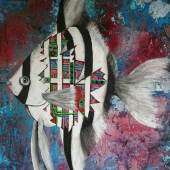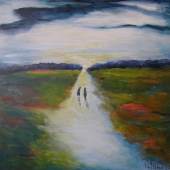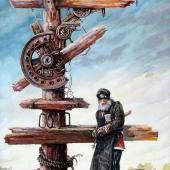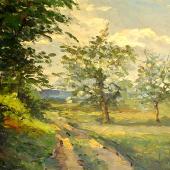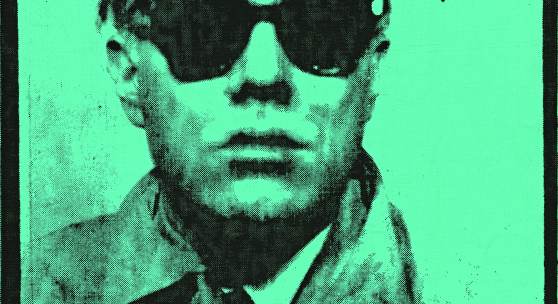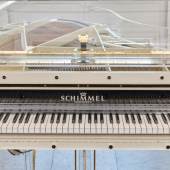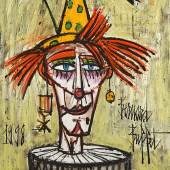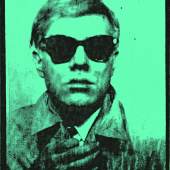Sotheby’s
Warhol's First Self-Portrait to be Offered in London
-
Auktion28.06.2017
A work from Andy Warhol’s very first series of self-portraits will star as part of Sotheby’s Contemporary Art Evening Auction on 28 June 2017. In the early 1960s the legendary Pop art pioneer had achieved renown for his candid portrayals of luminaries including Marilyn Monroe, Jackie Kennedy and Elizabeth Taylor. Self-Portrait, 1963-64, represents the moment that Warhol stepped out from behind the camera and into the glare of its flashbulb – and the moment that Warhol the icon was born. This was a turning point that reverberated throughout his oeuvre, as Warhol joined the ranks of Rembrandt, Van Gogh and Picasso to take his place among the most important and influential self-portraitists in the history of art. Created when Warhol was 35 years old, Self-Portrait will be offered at auction for the first time, 30 years after the artist’s death in 1987.
“In the age of Instagram, Warhol’s fabled prediction that ‘in the future, everyone will be world-famous for 15 minutes’ has never felt more prophetic, and the artist’s first self-portraits - created using a strip of photographs taken in a New York dime store photo-booth - have never felt more relevant to contemporary culture. This is a work of immense art historical importance that marks the watershed moment when Warhol joined the canon of the greatest self-portraitists.” - James Sevier, Senior Specialist, Contemporary Art
THE FIRST SELF-PORTRAITS, 1963-64
Throughout his career, Warhol turned to his own visage to create works filled with immediacy, vivacity, and sleek conceptual cool. Warhol made this series of self-portraits the behest of the feted Detroit collector Florence Barron. Warhol’s fame in the art world was blossoming and, in 1963, Barron wanted her own portrait done in his already iconic style. However, Ivan Karp, dealer at New York’s legendary Leo Castelli Gallery, managed to persuade both artist and patron that a self-portrait would be even more appropriate. The dealer, convinced that a self-portraiture series would propel Warhol to new heights, had been trying to persuade the artist for some time: “You know, people want to see you. Your looks are responsible for a certain part of your fame – they feed the imagination”.
Self-Portrait was created using images taken in a New York photo-booth. The use of such unconventional source material was, at this time, fiercely innovative, and added to the aura of technical invention that already surrounded this artist, who had pioneered the use of silkscreen printing in art only a couple of years previously. Warhol had previously used the same photo-booth medium to create an extraordinary portrait of the famous New York collector Ethel Scull. The resultant painting is now one of the most celebrated works of Warhol’s early career, jointly owned by the Whitney Museum of American Art and the Metropolitan Museum of Art, New York. Years later, Scull described how Warhol had taken her to a seedy amusement arcade on 42nd Street to shoot the photos: “We were running from one booth to another, and he took all these pictures and they were drying all over the place… I was so pleased. I think I’ll go there for all my pictures from now on”.
These miniature portraits from dime store photo-booths perfectly suited Warhol’s vision for a new type of art to suit the Pop era: they were mechanical, democratic, and quintessentially all-American. In an age before photography was ubiquitous, these photo-booths subjected the everyman to the same paparazzi flash bulbs as the most glamorous celebrity. The use of the photo-booth portraits also had serious art historical significance; notably for the British painter Francis Bacon, who used photo-booth strips in a directly comparable manner to Warhol for his 1967 work, Four Studies for Self Portrait.
Warhol considered his first engagements with self-portraiture a consummate success. He revisited the genre throughout the 1960s, and periodically in the ensuing decades. His self-portraits from later years reflect the growing concerns that he had with mortality as his life progressed. In 1968 the artist was critically wounded by a gunshot and, although he survived, themes related to the fragility of human life became ever more prominent from this point on. We can observe this not only in the 1978 Self-Portrait with Skull, but also in the famous Fright Wig series of 1986, in which Warhol showed himself confronting the reality of the passage of time with a Rembrandt-esque sense of poignancy. More than any artist before him, Warhol’s image, identity, and constructed public persona, were inextricably bound to his art. The self-portraits thus became the richest and most fertile sites for his invention. Starting with the present painting, he commodified himself into an icon – as immediately identifiable as Elvis, Marilyn, or Liz. In Self-Portrait, as much as in any of the self-portraits that followed, Warhol presents himself as a constructed fiction. We are reminded of the artist’s 1967 statement: “If you want to know about Andy Warhol, then just look at the surface of my pictures, my movies and me and there I am: there’s nothing in between”.
-
23.01.2025 - 30.01.2025Vom 23. bis 30. Januar 2025 präsentiert Sotheby’s eine außergewöhnliche Online-...
-
06.03.2025Sotheby’s, eines der weltweit führenden Auktionshäuser, beginnt das Jahr 2025 mit einer...
-
28.06.2017Auktion »
Sotheby’s Contemporary Art Evening Auction on 28 June 2017.
